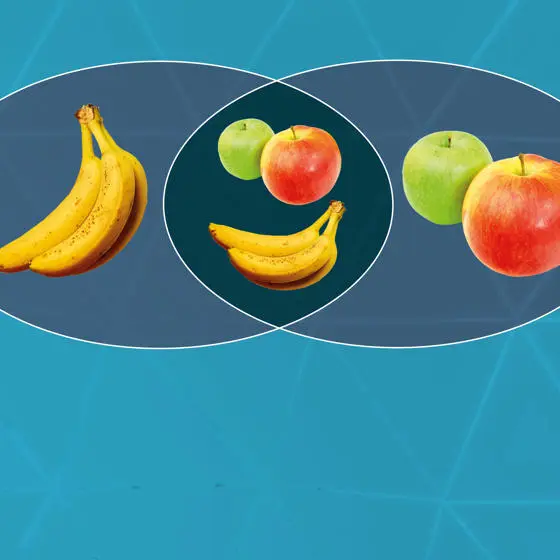Better measurement of income inequality levels and trends

[The research] had an important role in improving the quality and coherence of statistics in this area ... the improvement of the official statistics in terms of accuracy and coherence has fed through into wider understanding of changes in income inequality.
What was the problem?
Productive debate about what is happening to social inequality requires reliable estimates. The "go-to" sources for information about UK income inequality levels and trends are the data produced annually by the Office for National Statistics (ONS) and the Department for Work and Pensions (DWP) using household surveys.
These are widely cited, and relied on by government departments, think tanks and major institutions. These statistics have been used by commentators to suggest that income inequality has been "broadly unchanged" in the past quarter century, in the words of a former Deputy Governor of the Bank of England.
And yet inequality levels and trends are not fully captured by these "go-to" sources. Household surveys do not capture incomes at the very top of the income range very well. In particular, the share of total income held by the very richest groups in the UK has increased dramatically in recent decades according to administrative records data from personal income tax returns held by Her Majesty’s Revenue and Customs (HMRC).
What did we do?
Research by Professor Stephen P Jenkins and colleagues has shown how to exploit the complementary strengths of tax data and ONS’s survey data, combining the information held by HMRC – for which top income coverage is excellent – with survey data about the rest of the income range. Reconciling these two sources confirmed that household surveys are increasingly bad at capturing the income of the very richest people. By contrast, tax data is better at top-income coverage.
This research shows that UK income inequality is greater than shown by the two official series and, moreover, has increased since the mid-1990s to a greater extent than most people claim. From splicing together combined-data series with earlier series, the researchers could show that inequality today is as high as it was just before World War Two.
This research has produced recommendations for improving the quality of the official income distribution data series. Since the 1990s, the DWP’s Households Below Average Income series has incorporated some information from tax data, which modifies the incomes of at most the top 0.5 per cent. This research shows that, first, to properly address top income under-coverage, you need to adjust more, around 3 to 5 per cent of top incomes. Second, you need to take better account of the inequality among the very rich group. Third, the research recommended the DWP should drop separate survey adjustments to top incomes for groups defined by country (Northern Ireland versus Great Britain) and whether of pension age, since these characteristics were poor markers of top income status. And fourth, the research indicated that using HMRC’s Survey of Personal Incomes (SPI) data from a past year (because current year data are unavailable when the ONS and DWP prepare their statistics) introduced systematic biases, and recommended further work should be done on this.
The ONS examined these four recommendations. In the resulting new official income distribution series, the first two recommendations were adopted. Recommendation three was partly adopted (stratification by pension age was retained). Addressing recommendation four, ONS also found biases, and recognised this as an issue that would need to be monitored.
This research has also drawn attention to problems with other proposed approaches to addressing top income under-coverage, notably one the OECD was developing.
In sum, this research provides new estimates of UK inequality levels and trends, reveals what the UK’s household income surveys do and don’t do, and makes constructive proposals about how to get better measures of income inequality.
What happened?
This LSE research has led to significant changes in how the UK’s ONS derives its official income distribution series, from 2020 onwards. Specifically, the research by Professor Jenkins and colleagues underpinned the ONS’s development of new procedures for estimating income inequality from household survey data.
At the beginning of the process, there were substantive discussions about methods between Jenkins and a joint ONS/DWP working group. Jenkins collaborated with Peter Matejic (then leader of DWP’s Households Below Average Income team), and his team and shared draft papers with them. Before the ONS introduced the changes to their official series, the ONS/DWP working group "road tested" their revised methods.
The 2019 series is derived in an almost identical manner to the research by Jenkins and colleagues, and confirms the research team’s findings regarding estimates of higher inequality levels when combined data are used. It also shows that inequality trends differ. For example, the old ONS series shows an inequality decline between 2010/11 and 2015/16 whereas the new series shows a rise.
This development work by the ONS resulted in their release of four bulletins in 2020 (three substantive and one methodological) signalling that their methods based on this research are now part of official statistics. The substantive bulletins are part of a series published annually (at a minimum): there are two on household income inequality and one on the effects of taxes and benefits on the distribution of household incomes, containing charts and data based on the new methods and series.
Because the ONS’s income distribution statistics are so widely used by government departments, think tanks, pressure groups, media and the public, the research has had substantial impact beyond the ONS. Specifically, the ONS (and DWP) series are relied on to understand the extent of fairness in contemporary society, and to analyse how much redistribution is undertaken by the UK’s income tax and benefit systems.
The release of the new ONS series made national newspapers. Writing in the Financial Times, Valentina Romei noted that "the new ONS data benefit from an improved methodology using data from the tax authority to help adjust the estimates of the highest paid, a group which has been less likely to respond to the ONS survey."
Beyond the UK, the research and resulting ONS revisions have stimulated debate about income distribution measurement among other national and international statistical agencies. This includes the OECD and the US Bureau of Economic Analysis (BEA), both of which are looking to this research to inform improvements to their own methodologies.

